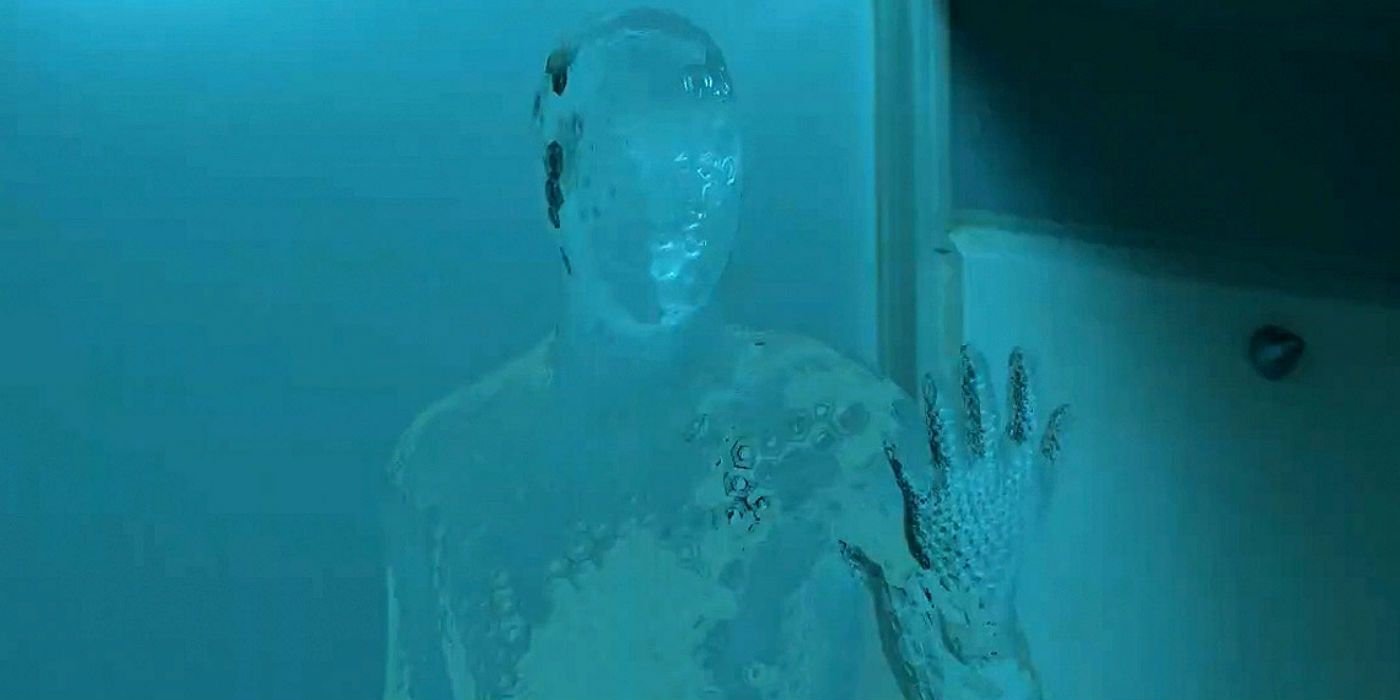Warning! Spoilers for The Invisible Man
Today’s advances in science prove that the suit Adrian wears in the 2020 science-fiction horror film, The Invisible Man, could actually exist. The movie, directed by Leigh Whannell, portrays an engineer and businessman—played by Oliver Jackson-Cohen, who also starred in the Netflix series adaption of Shirley Jackson’s The Haunting of Hill House—who, after staging his own suicide, uses his optics engineering skills to craft an invisible suit. He then uses that cutting-edge technology to stalk and terrorize his ex-girlfriend, Cecilia, played by Elizabeth Moss of Hulu’s The Handmaid’s Tale fame.
After Cecilia flees her abusive relationship and learns that Adrian has indeed created an invisible suit to use to torment her, she goes to the police; as in most horror movies, they refuse to believe the protagonist’s story, so Cecilia must take matters into her own hands and find a way to fight back against Adrian. In the end, she gets the upper hand and the suit. The Invisible Man is one of several movies hitting home video early due to COVID-19, so those who missed seeing it during its theatrical run will soon be able to stream it.
This isn't the first time this story has been told. It's a contemporary take on H. G. Wells’ 1897 novel of the same name. The first film adaption came in the form of a 1933 James Whale vehicle, produced by Universal. The movie was a hit and sparked a slew of sequels and spin-offs. The success of The Invisible Man has producer Jason Blum considering remaking other early 1900s horror classics; the big screen might even soon see a Blumhouse Frankenstein.
The Invisible Man: Could Adrian's Technology Exist?
While The Invisible Man is indeed a science fiction story, it turns out that the suit Adrian makes in the movie could be close to a reality. In the Annals of Technology section of a recently published New Yorker issue, writer John Seabrook examines the science behind “stealth streetwear.” Seabrook details how Tom Goldstein, an associate professor of computer science at the University of Maryland, has made an invisibility cloak that “looks like a baggy sweatshirt made of glossy polyester.” To the human eye, Goldstein was impossible to miss when wearing the unattractive garment, but when he stepped in front of an object detector called You Only Look Once (YOLO), a vision system oft built into robots and CCTV, he was undetected.
Similarly, as Smithsonian Magazine reported in February, scientists at the University of Rochester have figured out a low-tech way to achieve invisibility, with a process that involves four lenses spaced around an object to bend light in such a way that it creates a blind spot between them, rendering the object unseen. Another invention was crafted in Canada last year, as Futurism reported in October. Hyperstealth Biotechnology Corp. has long manufactured camouflage uniforms for militaries across the world, and last year the company patented a “Quantum Stealth” material that disguises soldiers (as well as tanks, aircraft, and ships) by making objects behind them seem invisible. The material—which can be used on its own, without being plugged in, and is paper thin—also works by bending light around a target to make it seemingly disappear.
While scientists have indeed made grand moves in the invisibility space, there is a long way to go. In the movie, Adrian’s suit renders him completely invisible, and he goes unseen until Cecilia dumps white paint over him. It’s hard to say what invisible suits could be used for in the real world, though aforementioned military initiatives come to mind, as do undercover government operations. It’s hard to say what plans Cecilia has for the suit when it's smuggled in her bag at the end of the movie; perhaps that question will be answered later, as The Invisible Man definitely left room for a sequel.


